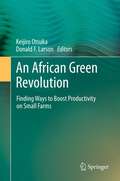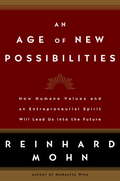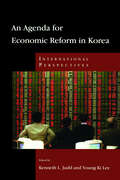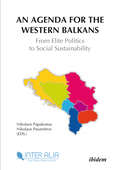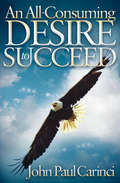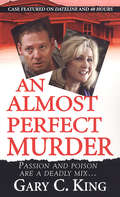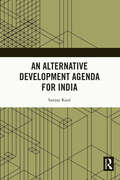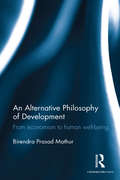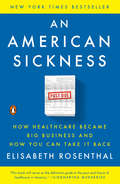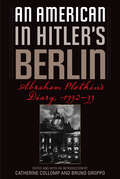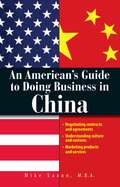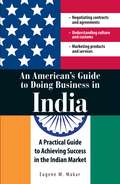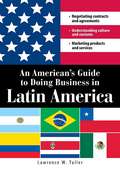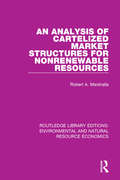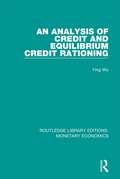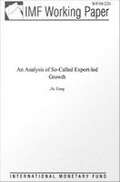- Table View
- List View
An Activist Approach: Confidential Role Assignment for Fultons Department Stores
by Guhan Subramanian Kaitlyn SzydlowskiA three party, multiple-issue negotiation exercise dealing with a potential merger between two leading department stores, called for by an activist investor hedge fund in a letter to both companies. Company management will now attempt to navigate next moves, which are complicated by weak takeover defenses of their corporate boards, hedge fund ownership stake within both companies, and potential anti-trust risk. Meanwhile, the third party, the activist hedge fund, is turning up the heat in planning their next move.
An Activist Approach: Confidential Role Assignment for Remingtons Housewares
by Guhan Subramanian Kaitlyn SzydlowskiA three party, multiple-issue negotiation exercise dealing with a potential merger between two leading department stores, called for by an activist investor hedge fund in a letter to both companies. Company management will now attempt to navigate next moves, which are complicated by weak takeover defenses of their corporate boards, hedge fund ownership stake within both companies, and potential anti-trust risk. Meanwhile, the third party, the activist hedge fund, is turning up the heat in planning their next move.
An African Green Revolution: Finding Ways to Boost Productivity on Small Farms (Natural Resource Management and Policy #48)
by Keijiro Otsuka Donald F. LarsonThis volume explores the usefulness of the Asian model of agricultural development for Africa, where, even before the recent world food crisis, half the population lived on less than on dollar a day, and a staggering one in three people and one third of all children were undernourished. Africa has abundant natural resources; agriculture provides most of its jobs, a third of national income and a larger portion of total export earnings. However the levels of land and labor productivity rank among the worst in the world. The book explains Africa's productivity gap and proposes ways to close it, by examining recent experience in Africa and by drawing on lessons from Asia.
An Age Of New Possibilities
by Reinhard MohnWe live in an exciting and rapidly changing time—every day it seems new inventions and innovations that change our way of life arrive on the scene. But while our day-to-day lives have become easier, the larger picture is now more complicated. Businesses are also faced with this quandary. Change is occurring in the economic sphere as quickly and often as it is in our individual lives, and the new global economy is presenting even more challenges to companies that must operate in an often unfamiliar worldwide arena. As a result, the modern business world is in dire need of a complete overhaul if companies are to adapt to an environment that is far different from the one in which they initially achieved success. Enter Reinhard Mohn, the innovative entrepreneur who built Bertelsmann into a global powerhouse. Drawing on his more than fifty years of experience in the private sector, Mohn explains how entrepreneurial leaders have a unique ability to lead businesses into the future by adapting to new socioeconomic realities. He shows how private businesses have become increasingly connected to both politics and the public sector, making the need for constant change necessary to the survival and success of all companies. Furthermore, Mohn demonstrates why, in order to thrive in the future, businesses—as well as governmental and social organizations—must abandon the obsolete practices they have long relied on, creating instead new ways of doing business to adapt to our ever more mutable world. With a career’s worth of knowledge gained by guiding Bertelsmann to become one of the foremost media companies in the world, Mohn offers invaluable insights in An Age of New Possibilities, making this an essential read for anyone with a taste for the incredible challenge of doing business in the twenty-first century.
An Agenda for Economic Reform in Korea: International Perspectives
by Kenneth Judd Young-Ki LeeAn Agenda for Economic Reform in Korea looks at Korea's economic problems from the perspective of the American experience with economic reforms and sheds new light on the problems of economic reform facing nations all over the world. The authors examine such issues as corporate governance, social welfare, labor relations, and other pressing challenges—and suggest a new vision for the Korean economy.
An Agenda for the Western Balkans: From Elite Politics to Social Sustainability
by Nikolaos Papakostas Nikolaos PasamitrosThe Western Balkan countries have been both a popular subject matter for diachronic analysis and a 1990s favorite. The significant changes that followed the most recent times of conflict in the region mostly evolve around the process of Europeanization. Despite the plethora of analyses, most approaches to the Western Balkans suffer from theoretical stagnancy, ex parte political practice, and detachment of politics from societal needs. This volume is the work of a team of theorists and practitioners who attempt a multidisciplinary approach to Western Balkans reality. <P><P>An Agenda for the Western Balkans offers a critical view on issues that have been over-analyzed in mainstream terms and opens a discussion that will occupy researchers and practitioners for years to come. It addresses novel topics and engages in innovative approaches that cut across disciplines of social sciences (political science, international relations, sociology, historiography, geography, political economy) and levels of analysis (local, national, regional, European, global). This collection is a pioneer theoretical and practical guide towards a sustainable future for the Western Balkans.
An All-Consuming Desire to Succeed
by John Paul CarinciAn inspirational self-help book for those seeking personal fulfillment and professional success from the author of The Power of Being Different. We are all searching for a better life, more inspiration, and a way to be more productive and fulfilled—without the constant competition in our personal lives and workplaces wearing us down. With An All-Consuming Desire to Succeed, you can learn to stand out from the crowd by discovering: how to maintain a competitive edge through positive affirmations; how to control negative influences; the secrets of the highly successful; how to plan out and achieve newfound goals; and lessons on how to motivate yourself to stay true to your unique vision. &“In the spirit of such inspirational authors as Norman Vincent Peale, Napoleon Hill, and W. Clement Stone, John Paul Carinci has written a classic self-help book centered around achieving success . . . Any reader seeking a healthy dose of positive motivation to achieve the loftiest goals or even to meet the daily challenges of life is sure to find much of value in John Paul Carinci&’s inspirational work.&” —Foreword Reviews
An Almost Perfect Murder
by Gary C. KingA critical care nurse marries his patient&’s widow only to later poison her in this true crime story by the author of Stolen in the Night.A Woman with A Passion For Power . . .Kathy Marie Augustine was not out to make friends. In politics, she rose to the top by playing hardball—and pushing her way through the old boy&’s network of the Nevada legislature, rising to the rank of State Controller. When she died, only a few people shed tears—including the man who killed her.A Killer with A Foolproof Plan . . .Chaz Higgs was a former body-builder turned intensive care nurse who saw wealthy, sexy Kathy Marie Augustine as his meal-ticket—until he couldn&’t stomach her domineering personality any longer. When Chaz decided he&’d had enough, he chose a poison that would leave no evidence behind.Murder Hidden in Plain Sight . . .The death of a nationally-known politician made headlines, but one slip of the tongue came to the attention of a determined Nevada detective. Now, true-crime master Gary C. King takes us into the extraordinary life and death of a famously ambitious woman politician, behind the scenes of the investigation that unearthed shocking secrets, and into the heart and mind of a man who nearly got away with the perfect crime . . .Includes Sixteen Pages of Revealing Photos
An Alternative Development Agenda for India
by Sanjay KaulThis book provides a revamped, transformative, and fiscally sustainable developmental agenda for India to radically improve the well-being and livelihoods of its citizens. Grounded in a ‘people first’ approach, this alternative agenda focuses on seven vital development and inter-connected areas, including health, education, food and nutrition, child development, gender, livelihood and jobs, and urbanization. The volume highlights the systemic issues plaguing these sectors and offers pragmatic and implementable solutions to address them. The author takes cognizance of the COVID-19 pandemic and draws attention to the limitations of the current public policies and suggests cost-effective interventions and strategies that focus on the poor. The volume discusses crucial themes of universalizing healthcare, battling malnutrition and food insecurity, ensuring quality schooling, unshackling gendered mindsets, enhancing livelihoods and improving the urban quality of life to spell out a pragmatic and workable development agenda for India. Accessible and reader-friendly, the book will be an essential read for scholars and researchers of development studies, economics, public policy, governance, development policy, public administration, political studies, South Asia studies. It will also be of interest to professionals in the development sector.
An Alternative Explanation for the Resource Curse: The Income Effect Channel
by Ali Alichi Rabah ArezkiA report from the International Monetary Fund.
An Alternative Philosophy of Development: From economism to human well-being
by Birendra Prasad MathurWhile development has been the foremost agenda before successive governments in India, it has been viewed narrowly – from the perspective of economic development and particularly in terms of gross domestic product (GDP). This book questions such an approach. It breaks from the conventional wisdom of GDP growth as being a definitive measure of the success of a country’s policies and offers an alternative development philosophy. The author contends that people’s economic and social welfare, life satisfaction, self-fulfilment and happiness should be treated as indicators of real development. The book underlines that in a successful model of development, the country’s economic policies will have to synergize with its cultural ethos and that the objective of development should be gross national happiness and well-being of the people. This book will be useful to scholars and researchers of development studies, economics, public policy and administration, governance, political science and sociology, as well as to policymakers.
An American Nightmare: The Pitfalls of Home Ownership
by Toni R. HarrisAll of our lives, we have been taught that owning a home was part of the American dream. Recently, millions of people have found that home ownership can turn into a nightmare. Many home owners have found themselves “house poor” as a result of upside down mortgages, unexpected maintenance expenses, and taxes. Sometimes having the dream and not counting the cost of home ownership will bankrupt you, fi nancially, physically, and emotionally. Toni Harris takes an honest look on how owning a home became a prerequisite for success in America; how in this present day economy you may want to look at your options before you dive into a 30-year mortgage and how renting may be a more cost effective means for you in the 21st century. Topics covered in the book include: • Toni’s Personal Home Ownership Nightmare • The History of Home Ownership • The Psychology of Home Ownership • The Real Cost of Home Ownership • Understanding Mortgages • Viable Solutions for Today’s Potential Home Owner
An American Sickness: How Healthcare Became Big Business and How You Can Take It Back
by Elisabeth Rosenthal<P>At a moment of drastic political upheaval, a shocking investigation into the dangerous, expensive, and dysfunctional American healthcare system, as well as solutions to its myriad of problems In these troubled times, perhaps no institution has unraveled more quickly and more completely than American medicine. <P>In only a few decades, the medical system has been overrun by organizations seeking to exploit for profit the trust that vulnerable and sick Americans place in their healthcare. Our politicians have proven themselves either unwilling or incapable of reining in the increasingly outrageous costs faced by patients, and market-based solutions only seem to funnel larger and larger sums of our money into the hands of corporations. Impossibly high insurance premiums and inexplicably large bills have become facts of life; fatalism has set in. Very quickly Americans have been made to accept paying more for less. How did things get so bad so fast? <P> Breaking down this monolithic business into the individual industries—the hospitals, doctors, insurance companies, and drug manufacturers—that together constitute our healthcare system, Rosenthal exposes the recent evolution of American medicine as never before. How did healthcare, the caring endeavor, become healthcare, the highly profitable industry? <P>Hospital systems, which are managed by business executives, behave like predatory lenders, hounding patients and seizing their homes. Research charities are in bed with big pharmaceutical companies, which surreptitiously profit from the donations made by working people. Patients receive bills in code, from entrepreneurial doctors they never even saw. The system is in tatters, but we can fight back. Dr. Elisabeth Rosenthal doesn't just explain the symptoms, she diagnoses and treats the disease itself. <P>In clear and practical terms, she spells out exactly how to decode medical doublespeak, avoid the pitfalls of the pharmaceuticals racket, and get the care you and your family deserve. She takes you inside the doctor-patient relationship and to hospital C-suites, explaining step-by-step the workings of a system badly lacking transparency. <P>This is about what we can do, as individual patients, both to navigate the maze that is American healthcare and also to demand far-reaching reform. An American Sickness is the frontline defense against a healthcare system that no longer has our well-being at heart. <P><b>A New York Times Bestseller</b>
An American in Hitler's Berlin: Abraham Plotkin's Diary, 1932-33
by Abraham PlotkinThis is the first published edition of the diary of Abraham Plotkin, an American labor leader of immigrant Jewish origin who lived in Berlin between November 1932 and May 1933. A firsthand account of the Weimar Republic's final months and the early rise of Nazi power in Germany, Plotkin's diary focuses on the German working class, the labor movement, and the plight of German Jews. Plotkin investigated Berlin's social conditions with the help of German Social-Democratic leaders whose analyses of the situation he records alongside his own. Compared to the writings of other American observers of the Third Reich, Plotkin's diary is unique in style, scope, themes, and time span. Most accounts of Hitler's rise to power emphasize political institutions by focusing on the Nazi party's clashes with other political forces. In contrast, Plotkin is especially attentive to socioeconomic factors, providing an alternative view from the left that stems from his access to key German labor and socialist leaders. Chronologically, the diary reports on the moment when Hitler's seizure of power was not yet inevitable and when leaders on the left still believed in a different outcome of the crisis, but it also includes Plotkin's account of the complete destruction of German labor in May 1933.
An American's Guide To Doing Business In China
by Mike SaxonDid you know? Americans have bought $185 billion worth of Chinese goods China's economy is growing at an astounding rate of 9 percent a year The trade gap between the U.S. and China has been growing by more than 25 percent per year. Whether you work for a company doing business in China, or are an entrepreneur looking to export your goods and services An American's Guide to Doing Business in China teaches you the practicalities and the pitfalls of dealing with this complex market. While there are undeniable opportunities in the Chinese market there is also a great deal of hype-and very real political and cultural differences that make doing business in China extremely challenging. Written by an industry expert with more than two decades of experience, An American's Guide to Doing Business in China is an authoritative and accessible guide on all aspects of doing business in China. An American's Guide to Doing Business in China gives you the information most relevant to doing business in China on a day-to-day basis including: Finding manufacturing partners; Negotiating contracts and agreements; Choosing a location and hiring employees. This guide also teaches you how to navigate Chinese culture and customs, market and advertise to Chinese consumers, and find the hottest opportunities. An American's Guide to Doing Business in China is what you need to succeed in the world's biggest market.
An American's Guide To Doing Business In China: Negotiating Contracts And Agreements; Understanding Culture and Customs; Marketing Products and Services
by Mike SaxonA Simon & Schuster eBook. Simon & Schuster has a great book for every reader.
An American's Guide to Doing Business in China
by Mike SaxonWritten by an industry expert with more than two decades of experience, An American's Guide to Doing Business in China is an authoritative and accessible guide on all aspects of doing business in China.
An American's Guide to Doing Business in India
by Eugene M MakarDid you know that . . .U.S. money pours into India at a rate of over $25 million every day? India's economic growth has averaged 8.6 percent a year since 2004? At this rate, India will become the fifth largest consumer market by 2025 (up from #12 today)? U.S. venture firms will raise $1 billion for India by the end of 2007? U.S. exports to India have more than doubled over the last five years? China aside, India is the world's most rapidly growing economy. But cashing in on that opportunity can be as challenging as it is rewarding. Whether you work for a company doing business in India or are an entrepreneur looking to export your goods and services, An American's Guide to Doing Business in India will help you navigate all aspects of this complex market. Esteemed industry consultant Eugene M. Makar offers his proven tips, tools, and techniques to help you: Break into the market; Weigh the pros and cons of investments; Find joint venture partners; Hire local representation; and more.You'll also learn to recognize key social and cultural differences. From where to bank to what to wear, you'll discover what makes India different-and how you can best position yourself there for success.
An American's Guide to Doing Business in India
by Eugene M. MakarChina aside, India is the world's most rapidly growing economy. But cashing in on that opportunity can be as challenging as it is rewarding. Whether you work for a company doing business in India or are an entrepreneur looking to export your goods and services, An American's Guide to Doing Business in India will help you navigate all aspects of this complex market. Esteemed industry consultant Eugene M. Makar offers his proven tips, tools, and techniques to help you: Break into the market, Weigh the pros and cons of investments, Find joint venture partners, Hire local representation.
An American's Guide to Doing Business in Latin America
by Lawrence TullerDid you know this?In 2006, U.S. exporters shipped four and a half times as much product to Latin America as to China.Latin America has more than 500 million consumers ready to buy U.S. manufactured goods.Now is the time to enter this emerging new market-but doing business in Latin America is not always easy.In An American's Guide to Doing Business in Latin America, author and international trade expert Lawrence W. Tuller shows you how to determine market risk, select reliable Latin American partners, and use export-trading companies to grow your business opportunities. He also provides up-to-date facts on the politics of the region and U.S.-Latin American relations.Following Tuller's advice, you'll learn how to:Finance exports and direct investmentCreate advertising strategiesPartner with Latin American companiesLatin America is ripe and ready for American business and investment. Are you ready to cash in?This book includes detailed information on:Argentina, Bolivia, Brazil, Chile, Colombia, Costa Rica, Dominican Republic, Ecuador, El Salvador, Guatemala, Guyana, Honduras, Jamaica, Mexico, Nicaragua, Panama, Paraguay, Peru, Trinidad and Tobago, Uruguay, Venezuela
An American's Guide to Doing Business in Latin America
by Lawrence W. TullerNow is the time to enter this emerging new market-but doing business in Latin America is not always easy. In An American's Guide to Doing Business in Latin America, author and international trade expert Lawrence W. Tuller shows you how to determine market risk, select reliable Latin American partners, and use exporttrading companies to grow your business opportunities. He also provides up-to-date facts on the politics of the region and U. S. -Latin American relations.
An American's Guide to Doing Business in Latin America: Negotiating contracts and agreements. Understanding culture and customs. Marketing products and services
by Lawrence W TullerDid you know this?In 2006, U.S. exporters shipped four and a half times as much product to Latin America as to China.Latin America has more than 500 million consumers ready to buy U.S. manufactured goods.Now is the time to enter this emerging new market-but doing business in Latin America is not always easy.In An American's Guide to Doing Business in Latin America, author and international trade expert Lawrence W. Tuller shows you how to determine market risk, select reliable Latin American partners, and use export-trading companies to grow your business opportunities. He also provides up-to-date facts on the politics of the region and U.S.-Latin American relations.Following Tuller's advice, you'll learn how to:Finance exports and direct investmentCreate advertising strategiesPartner with Latin American companiesLatin America is ripe and ready for American business and investment. Are you ready to cash in?This book includes detailed information on:Argentina, Bolivia, Brazil, Chile, Colombia, Costa Rica, Dominican Republic, Ecuador, El Salvador, Guatemala, Guyana, Honduras, Jamaica, Mexico, Nicaragua, Panama, Paraguay, Peru, Trinidad and Tobago, Uruguay, Venezuela
An Analysis of Cartelized Market Structures for Nonrenewable Resources (Routledge Library Editions: Environmental and Natural Resource Economics)
by Robert A. MarshallaOriginally published in 1979. While the theory of non-renewable resources under competitive and monopolistic market regimes have been relatively well developed, almost no attention has been given to the development of a theoretical framework for analysis of the spectrum of mixed market structure between those extremes. The world oil market structure is an example of such an intermediate market structure. The purpose of this title is to develop such a theoretical framework. The study examines non-renewable resource markets in which a profit maximizing producer cartel co-exists with a non-cartel supply sector, which is alternately modelled as consisting of a collection of competitive firms or as exhibiting other exogenously assumed supply behaviours. This title will be of interest to students of environmental economics.
An Analysis of Credit and Equilibrium Credit Rationing (Routledge Library Editions: Monetary Economics #10)
by Ying WuThis study, first published in 1994, is intended to deepen the readers understanding of the phenomenon of equilibrium credit rationing in two areas. The first area concerns the form that equilibrium credit rationing assumes and its importance in determining the behaviour of interest rates. The second concerns the role of equilibrium credit rationing in transmitting monetary shocks to the real sector. This title will be of interest to students of monetary economics.
An Analysis of So-Called Export-led Growth
by Jie YangA report from the International Monetary Fund.

